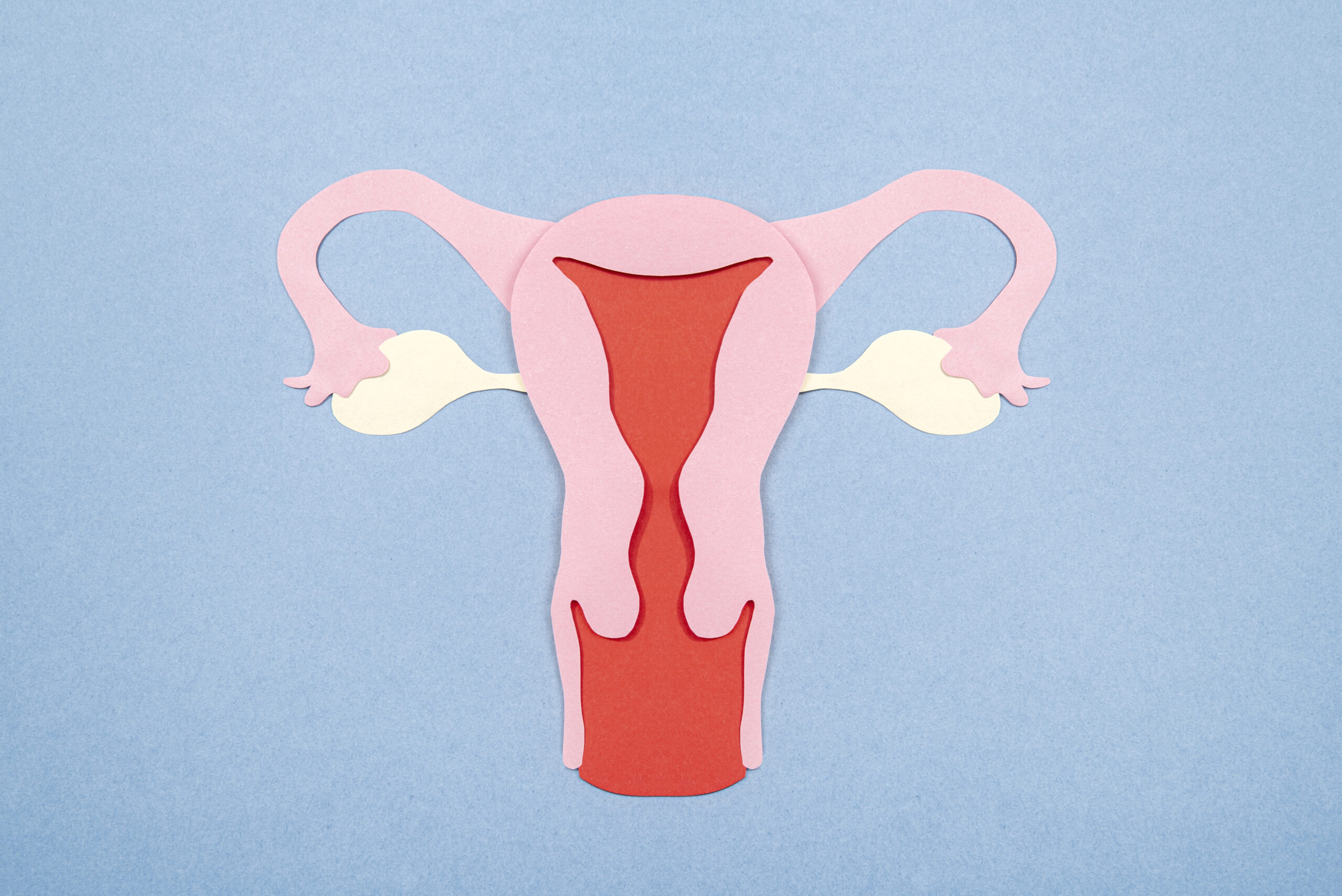Ovarian cancer, a prevalent malignancy in women, originates in the female gonad or ovary. The female body houses two ovaries in the pelvis adjacent to the uterus. Functioning as an endocrine gland, the ovaries produce various hormones, with estradiol being the primary hormone responsible for developing female characteristics. The second key role of the ovaries is to produce female gametes, i.e., egg cells. Fertilization of the egg by the sperm gives rise to pregnancy and the development of the fetus in the uterus.
Comprising diverse cell types with distinct functions, the ovary is susceptible to malignant tumor formation from any cell line. The term “ovarian cancer” is commonly used to encompass tumors of germ cells or stromal cells, which often yield positive prognoses and may not meet the strict criteria for cancer. The most prevalent form of malignant ovarian cancer is serous carcinoma.

There are two distinct types of ovarian cancer![]() characterized by variances in molecular etiology, growth patterns, and prognoses.
characterized by variances in molecular etiology, growth patterns, and prognoses.
Type I![]() , less prevalent, originates from benign ovarian tumors or tumors with borderline malignancy, manifests as a discrete ovarian tumor, and subsequently spreads to the peritoneal cavity over time. Histologically, it commonly presents as endometrioid or mucinous carcinoma and generally carries a slightly more favorable prognosis compared to type II. It is frequently diagnosed at stages I and II.
, less prevalent, originates from benign ovarian tumors or tumors with borderline malignancy, manifests as a discrete ovarian tumor, and subsequently spreads to the peritoneal cavity over time. Histologically, it commonly presents as endometrioid or mucinous carcinoma and generally carries a slightly more favorable prognosis compared to type II. It is frequently diagnosed at stages I and II.
Conversely, type II![]() , more prevalent, arises as a malignant ovarian tumor from the outset. Often, there is no discernible ovarian tumor, and the disease rapidly disseminates throughout the peritoneal cavity. Histologically, it typically manifests as poorly differentiated serous carcinoma and is linked with an unsatisfactory prognosis. It is predominantly detected at stages III and IV.
, more prevalent, arises as a malignant ovarian tumor from the outset. Often, there is no discernible ovarian tumor, and the disease rapidly disseminates throughout the peritoneal cavity. Histologically, it typically manifests as poorly differentiated serous carcinoma and is linked with an unsatisfactory prognosis. It is predominantly detected at stages III and IV.
The specialists still evaluate the etiology of ovarian cancer![]() . It is postulated that the disease arises from the impairment of cellular DNA by an unidentified pathological process or genetic predisposition. Various documented risk factors also contribute to the development of ovarian cancer.
. It is postulated that the disease arises from the impairment of cellular DNA by an unidentified pathological process or genetic predisposition. Various documented risk factors also contribute to the development of ovarian cancer.
However, it has been established that individuals with specific DNA mutations are at a heightened risk of developing the disease. Genes, which encode various physiological functions, can harbor mutations that elevate cancer susceptibility. Mutation of the BRCA-1 and BRCA-2 genes![]() predisposes to the development of ovarian and breast cancer. These mutations are inherited from parents to children – which is why ovarian cancer sometimes runs in families (that is, much more often in one family than another).
predisposes to the development of ovarian and breast cancer. These mutations are inherited from parents to children – which is why ovarian cancer sometimes runs in families (that is, much more often in one family than another).
The mutations above alter cellular metabolism, leading to aberrant cellular function, morphological changes, and dysregulated production of substances.
The subsequent phase involves uncontrolled cell division, wherein the cell loses its programmed cell death (apoptosis) and proliferates continuously, giving rise to increasingly mutated cells, thereby expanding the cancerous tumor.
Ovarian cancer cells originate in the ovarian epithelium and infiltrate adjacent organs, a process known as infiltration. Ovarian cancer exhibits continuous spread and infiltration into the fallopian tubes, uterus, intestines, and peritoneum.
Advanced ovarian cancer is also characterized by distant metastases, wherein cancer cells disseminate to distant organs through the circulatory and lymphatic systems and establish secondary tumors. The most common sites of metastasis for ovarian cancer are the lymph nodes, liver, and peritoneum.
The etiology of ovarian cancer remains incompletely understood. However, analysis of established risk factors suggests that ovarian stimulation, occurring naturally during the normal menstrual cycle or induced for therapeutic purposes, may contribute to the pathogenesis of ovarian cancer. Conversely, factors such as pregnancy, breastfeeding, or oral contraceptive use inhibit egg cell maturation and ovulation, altering ovarian function and lowering the risk of neoplastic transformation and cancer development.
Risk factors![]() for ovarian cancer include:
for ovarian cancer include:
The ovaries![]() on the sides of the uterus are small, round structures comprising various cell types, some of which can potentially undergo cancerous transformation under specific conditions. It can lead to the development of different kinds of ovarian cancer, with epithelial cell-derived ovarian cancer being the most prevalent.
on the sides of the uterus are small, round structures comprising various cell types, some of which can potentially undergo cancerous transformation under specific conditions. It can lead to the development of different kinds of ovarian cancer, with epithelial cell-derived ovarian cancer being the most prevalent.
Ovarian cancer is characterized by its insidious character, often staying asymptomatic in its early phases. As the disease progresses, its symptoms are generally nonspecific and could be attributed to various other ailments. The manifestation of ovarian cancer symptoms![]() is primarily linked to the presence of an enlarging pelvic tumor that exerts pressure on surrounding tissues and organs.
is primarily linked to the presence of an enlarging pelvic tumor that exerts pressure on surrounding tissues and organs.
As ovarian cancer progresses, you may experience:

An individual who visits the specialists with symptoms of the digestive system should experience a thorough diagnosis![]() . Then, the specialist may recommend a visit to a gynecologist.
. Then, the specialist may recommend a visit to a gynecologist.
A woman should come to a gynecologist's visit with the results of the tests. The gynecologist will often be able to verify the existence of an ovarian tumor during a physical examination. During further diagnostics, the doctor may order:
The assessment of beta HCG and alpha-fetoprotein plays a crucial role in identifying and monitoring potential cancer recurrence. The ROMA test![]() evaluates cancer risk, with ROMA standing for Risk of Ovarian Malignancy Algorithm. This test outcome provides the likelihood of a detected alteration being malignant, guiding medical professionals in making further diagnostic decisions related to the tumor.
evaluates cancer risk, with ROMA standing for Risk of Ovarian Malignancy Algorithm. This test outcome provides the likelihood of a detected alteration being malignant, guiding medical professionals in making further diagnostic decisions related to the tumor.
The ROMA test is not administered to individuals under 18 years of age, those undergoing chemotherapy, or women who have previously received cancer treatment. It considers the statistically estimated risk of developing a malignant ovarian tumor and the levels of two tumor markers (Ca-125 and HE-4), presenting the result as a percentage. The probability determined through the ROMA test constitutes one of the prognostic indicators for ovarian cancer.
Nevertheless, it is significant to note that tests measuring tumor marker concentrations do not offer absolute certainty.
Treatment![]() methods for ovarian cancer can be divided into several primary groups:
methods for ovarian cancer can be divided into several primary groups:
The most common treatment for ovarian cancer is chemotherapy combined with surgery.
The primary approach to treating ovarian cancer involves surgical intervention. The procedure's objective is to excise as much cancerous tissue as possible, a process known as cytoreduction. The complete removal of all discernible and palpable cancerous lesions from the abdominal cavity significantly enhances treatment outcomes. Often, this necessitates the resection of segments of the intestine or spleen. These interventions must be carried out by a specialized team of gynecological and surgical experts, as surgical procedures for ovarian cancer extend beyond the realm of standard gynecological practices.
The second, no less important, method of treating ovarian cancer is chemotherapy, which is usually administered after surgery. However, some people require chemotherapy before surgery. It involves administering (usually intravenously, via a drip) a powerful drug that destroys cancer cells. Side effects include nausea, bone marrow weakness, hair loss, and other symptoms that usually disappear after treatment ends. Most often, six cycles of chemotherapy are administered at intervals of 3-4 weeks.
In the context of maintenance therapy for ovarian cancer, PARP inhibitors play a significant role by impeding the repair mechanisms of cancer cells that have been compromised during chemotherapy. The resultant damage accumulation and the cell's inability to regenerate ultimately lead to its demise.
Hormone therapy is employed in individuals with hormone receptor-sensitive cancer cells. This therapeutic approach is integral to supportive care, aiming to decelerate cancer progression and enhance quality of life. Adverse effects of hormonal treatment may encompass headaches, dizziness, mood alterations (e.g., depression), weight gain, and fatigue, as well as rare but severe complications such as pulmonary embolism, arterial thrombosis, and ischemic stroke.
Radiotherapy currently plays a limited role in the treatment of ovarian cancer, primarily serving as a palliative or symptomatic measure. It is due to the widespread nature of the disease, which renders radiotherapy ineffective in eradicating all disease lesions.
The prognosis for ovarian cancer![]() depends on many factors – primarily the stage of the disease. Approximately 70% of patients begin treatment for ovarian cancer at clinical stage III or IV. Early diagnosis of an ovarian tumor is most often accidental. Ovarian cancer is one of the worst-prognosis cancers of the reproductive organs – due to the advanced clinical stage in which it is most often detected.
depends on many factors – primarily the stage of the disease. Approximately 70% of patients begin treatment for ovarian cancer at clinical stage III or IV. Early diagnosis of an ovarian tumor is most often accidental. Ovarian cancer is one of the worst-prognosis cancers of the reproductive organs – due to the advanced clinical stage in which it is most often detected.

The adaptation process, i.e., getting used to the disease, largely depends on the patient's attitude. Some people give up after diagnosis. Others, in turn, are active, focused on fighting, and looking for various methods leading to recovery, such as proper nutrition or exercise.
There is also a group of patients living “parallel” with the disease. They focus not only on health problems but also on non-health-related goals.
Some hope that the disease will go away on its own and try not to notice it, deny it, or downplay the symptoms. Yet another group of patients approach the problem rationally and maintain a stoic attitude.
Whether the patient manages to come to terms with the disease depends on his or her sensitivity to stress, ability to assess the situation, and flexibility.
A positive attitude is of great importance in the fight against disease, so the best methods of adapting to the disease are those that make us act actively, not give up, and believe in winning the disease.
In the case of ovarian cancer, there are no tests that can be performed regularly to help diagnose the disease at an early stage. An essential prevention component is routine visits to the gynecologist – women over 40 should visit at least yearly, and younger women every 1-3 years.
There is also no method to prevent ovarian cancer![]() because there are no undoubtedly specified causes of its development. However, eliminating risk factors may decrease the risk of its occurrence. The best way is:
because there are no undoubtedly specified causes of its development. However, eliminating risk factors may decrease the risk of its occurrence. The best way is:
It is significant to gather a detailed history of the occurrence of reproductive cancers among women in the closest degree of kinship (mother, grandmother, sister).